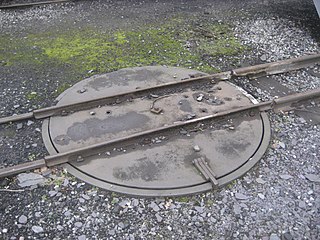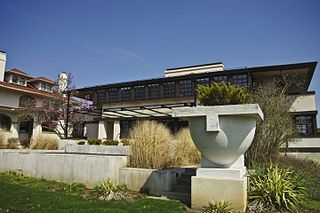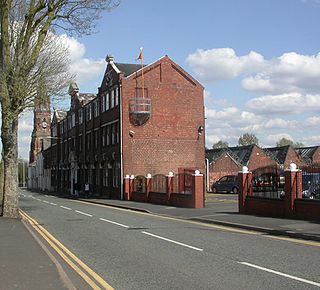
In rail terminology, a railway turntable or wheelhouse is a device for turning round railway rolling stock, usually locomotives, so that they face the direction they came from. It is especially used in areas where economic considerations or a lack of sufficient space have served to weigh against the construction of a turnaround wye. Railways needed a way to turn steam locomotives around for return journeys, as their controls were often not configured for extended periods of running in reverse; also many locomotives had a lower top speed in reverse. Most diesel locomotives, however, can be operated in either direction, and are considered to have "front ends" and "rear ends". When a diesel locomotive is operated as a single unit, the railway company often prefers, or requires, that it be run "front end" first. When operated as part of a multiple unit locomotive consist, the locomotives can be arranged so that the consist can be operated "front end first" no matter which direction the consist is pointed. Turntables were also used to turn observation cars so that their windowed lounge ends faced toward the rear of the train.

A driveway is a private road for local access to one or a small group of structures owned and maintained by an individual or group.

The Westcott House is a Frank Lloyd Wright-designed Prairie Style house in Springfield, Ohio. The house was built in 1908 for Mr. Burton J. Westcott, his wife Orpha, and their family. The Westcott property is the only Prairie style house designed by Wright in the state of Ohio. The grounds include the main house and a garage with stables connected by an extensive pergola.

Guy Motors was a Wolverhampton-based vehicle manufacturer that produced cars, lorries, buses and trolleybuses. The company was founded by Sydney S. Guy (1885–1971) who was born in Kings Heath, Birmingham. Guy Motors operated out of its Fallings Park factory from 1914 to 1982, playing an important role in the development of the British motor industry.

The Illinois Railway Museum is the largest railroad museum in the United States. It is located in the Chicago metropolitan area at 7000 Olson Road in Union, Illinois, 55 miles (89 km) northwest of downtown Chicago.

A residential garage is a walled, roofed structure with a door for storing a vehicle or vehicles that may be part of or attached to a home, or a separate outbuilding or shed. Residential garages typically have space for one or two cars, although three-car garages are used. When a garage is attached to a house, the garage typically has an entry door into the house, called the person door or man door, in contrast with the wider and taller door for vehicles, called the garage door, which can be opened to permit the entry and exit of a vehicle and then closed to secure the vehicle. A garage protects a vehicle from precipitation, and, if it is equipped with a locking garage door, it also protects the vehicle(s) from theft and vandalism. Most garages also serve multifunction duty as workshops for a variety of projects, including painting, woodworking, and assembly. Garages also may be used for other purposes as well, such as storage or entertainment.

Minsk Automobile Plant (MAZ) is a state-run automotive manufacturer association in Belarus, one of the largest in Eastern Europe.

Gräf & Stift was an Austrian manufacturer of automobiles, trucks, buses and trolleybuses, from 1902 until 2001, latterly as a subsidiary of MAN.
Rocar was a van, light truck, bus and trolleybus manufacturer based in Bucharest, Romania. The firm also produced light offroad vehicles and later heavy road vehicles. During its existence, the company produced over 350,000 vehicles.

Viseon Bus GmbH was a German bus, trolleybus and coach manufacturer, based in Pilsting, Bavaria, Germany. It was established in July 2008, and in April 2009 it took over the former Neoman bus and coach production facility of MAN Truck & Bus in Pilsting and a workforce of 220 employees. That plant had been manufacturing vehicles under the Neoplan brand, owned by MAN since 2001. Because of financial difficulties, Viseon Bus ceased production in 2013 and was liquidated in 2014.
Road powered electric vehicles (RPEV) collect any form of potential energy from the road surface to supply electricity to locomotive motors and ancillary equipment within the vehicle.

The Seattle trolleybus system forms part of the public transportation network in the city of Seattle, Washington, operated by King County Metro. Originally opened on April 28, 1940, the network consists of 15 routes, with 174 trolleybuses operating on 68 miles (109 km) of two-way parallel overhead lines. As of the fourth quarter of 2023, the system carries riders on an average of 39,900 trips per weekday, comprising about 18 percent of King County Metro's total daily ridership. At present in Seattle, a very common alternative term for trolleybus is trolley.

The Philadelphia trolleybus system forms part of the public transportation network serving Philadelphia, in the state of Pennsylvania, United States. It opened on October 14, 1923, and is now the second-longest-lived trolleybus system in the world. One of only four such systems currently operating in the U.S., it presently comprises three lines and is operated by the Southeastern Pennsylvania Transportation Authority (SEPTA), with a fleet of 38 trolleybuses, or trackless trolleys as SEPTA calls them. The three surviving routes serve North and Northeast Philadelphia and connect with SEPTA's Market–Frankford rapid transit line.

The Mendoza trolleybus system formed part of the public transport network in Mendoza, the capital city of Mendoza Province, Argentina. It is owned by the provincial government.
The automotive industry in North Korea is a branch of the national economy, with much lower production than the automotive industry in South Korea. In North Korea motor vehicle production is focused on military and industrial goals, including construction; few private citizens own cars.

St Helier railway station was the terminus of the Jersey Eastern Railway (JER) in Saint Helier, the capital of Jersey in the Channel Islands. Opened in 1874, it was situated in a railway cutting at the base of Mont de la Ville below Fort Regent. The station was referred to as St. Helier to distinguish it from another railway terminus opened by the Jersey Railway in 1873 at the Weighbridge in St Helier. The station was in passenger operation until the line closed in 1929. Today the site is occupied by the Snow Hill car park.

Sunbeam Commercial Vehicles was a commercial vehicle manufacturing offshoot of the Wolverhampton based Sunbeam Motor Car Company when it was a subsidiary of S T D Motors Limited. Sunbeam had always made ambulances on modified Sunbeam car chassis. S T D Motors chose to enter the large commercial vehicle market in the late 1920s, and once established they made petrol and diesel buses and electrically powered trolleybuses and milk floats. Commercial Vehicles became a separate department of Sunbeam in 1931.

The Unterburg trolleybus turntable is a disused turntable for trolleybuses of the Solingen trolleybus system, in the Solingen district Burg an der Wupper, Germany. The facility was regularly used by trolleybus line 683, operated by the Stadtwerke Solingen (SWS), until 15 November 2009, but is preserved in working condition.

A car elevator or vehicle elevator is an elevator designed for the vertical transportation of vehicles inside buildings, so increasing the number of vehicles that can be parked in parking lots and parking garages. Where real estate is costly, these car parking systems can reduce overall costs by using less land to park the same number of cars.



















